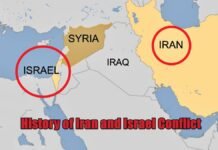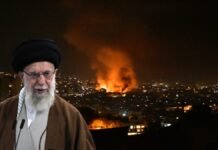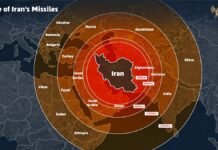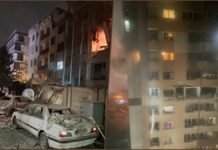
New Delhi: In a stunning and deadly surprise attack, the Palestinian militant group Hamas launched a massive assault on Israel on Saturday, October 7, 2023, killing more than 200 Israelis and wounding 1,000 others. The attack, dubbed ‘Operation Al-Aqsa Flood’, involved firing over 5,000 rockets from the Gaza Strip and sending dozens of fighters to infiltrate Israeli towns and military bases, where they killed or abducted civilians and soldiers.
Israel’s much-vaunted Iron Dome missile defense system, which has intercepted hundreds of rockets fired by Hamas in previous conflicts, was unable to cope with the sheer volume and intensity of the rocket barrage. Many rockets landed in Israeli territories, causing widespread damage and panic. Some rockets also hit a hospital in Ashkelon, injuring several patients and staff.
The Iron Dome system is designed to protect populated areas and critical assets by neutralizing short-range aerial threats. The system uses radar to detect and track incoming rockets and fires interceptor missiles to destroy them in mid-air. Each battery of the Iron Dome has a range of between 4-70 kilometers and can handle multiple threats simultaneously. The system is partly funded by the United States, which has contributed $5 billion to its development costs since 2016.
However, the system has its limitations and vulnerabilities. It can only intercept rockets that are headed toward populated areas or strategic targets, leaving others to fall harmlessly in open fields. It also has a finite number of interceptors, which are expensive to produce and replenish. Each interceptor missile costs between $100,000 and $150,000, while each rocket fired by Hamas costs only a few hundred dollars. Moreover, the system can be overwhelmed by a large number of rockets fired in a short span of time or from different directions, as Hamas demonstrated in its latest attack.
Hamas has been trying to find ways to overcome Israel’s Iron Dome for years. The militant group has been developing its crude rocket technology and increasing its range and accuracy. It has also been stockpiling rockets and digging tunnels under the Gaza-Israel border to launch surprise attacks. Hamas claims that its latest operation was aimed at avenging the Israeli aggression against the Al-Aqsa Mosque in Jerusalem, which is a holy site for Muslims.
Israel has vowed to retaliate with full force against Hamas and restore its deterrence. Prime Minister Benjamin Netanyahu declared that Israel is now at war with Hamas and said that the military will use all of its strength to destroy Hamas’ capabilities. He also warned that the war will take time and be difficult. Israel has launched airstrikes in Gaza, targeting Hamas’ leaders, weapons, infrastructure, and tunnels. The airstrikes have killed over 230 Palestinians and wounded 1,700 others in Gaza.

The international community has expressed alarm over the escalating violence and called for an immediate ceasefire. The United Nations Security Council held an emergency meeting on Sunday to discuss the crisis. The United States, Israel’s closest ally, has expressed its support for Israel’s right to self-defense but also urged both sides to de-escalate the situation and avoid civilian casualties. The US has also offered to mediate between Israel and Hamas to end the hostilities.
The conflict between Israel and Hamas is one of the longest-running and most complex in the Middle East. It stems from decades of political, religious, and territorial disputes over the land that both sides claim as their homeland. The conflict has claimed thousands of lives and displaced millions of people. It has also fuelled regional instability and radicalization. Despite several attempts at peace negotiations, the conflict remains unresolved and prone to flare-ups at any time.




















































